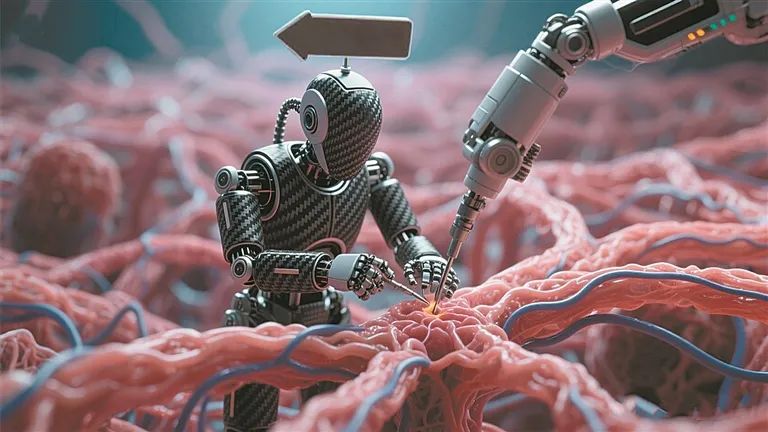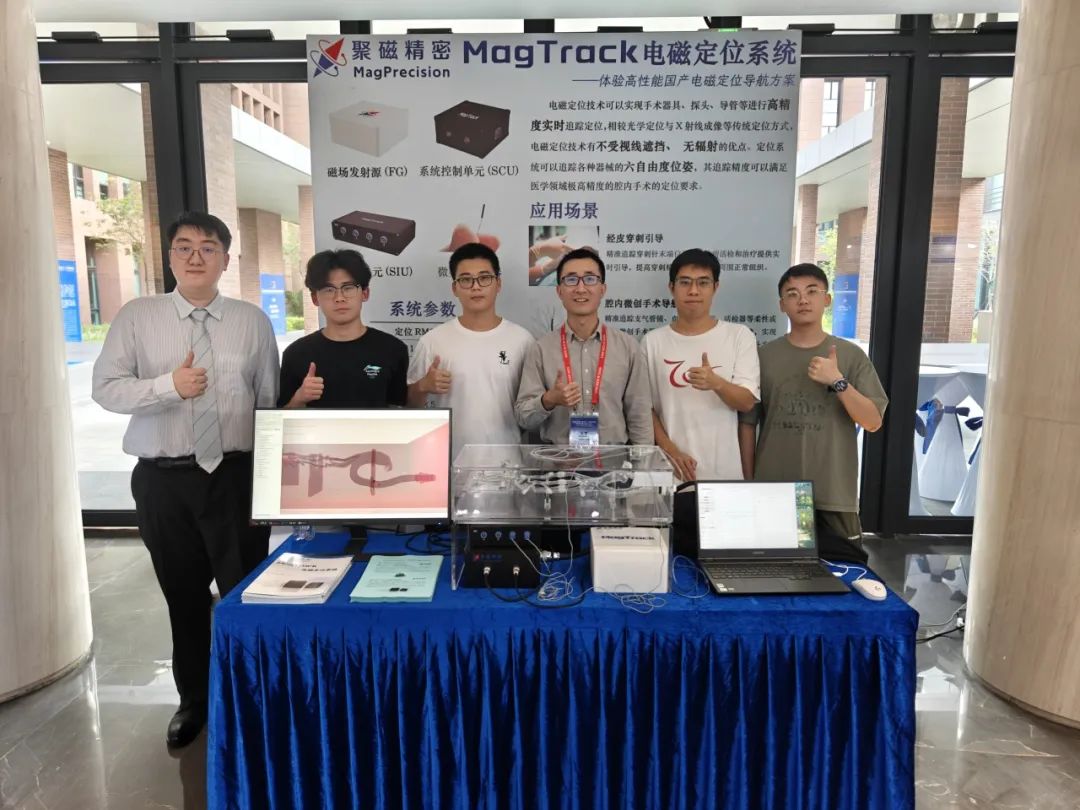
South China University of Technology has developed an innovative electromagnetic navigation system that overcomes cost and precision barriers in surgical robotics. The breakthrough technology, created by Prof. Heng Wang's team, combines a 3D electromagnetic field generator, micro sensors, and AI algorithms to achieve submillimeter accuracy at half the cost of imported systems. Dubbed the 'Neural Center,' it enables precise navigation in complex procedures including biopsies (1mm accuracy), endoscopies, and orthopedic surgeries (98% success rate). Currently commercialized as MagTrack, the system is transforming China's surgical robotics landscape alongside complementary technologies from SCUT spin-offs. This advancement demonstrates China's growing leadership in developing affordable, high-performance medical technologies with global implications for minimally invasive surgery.
In the field of minimally invasive surgery, robotic systems are revolutionizing traditional surgical procedures with their submillimeter precision, fatigue-resistant stability, and unparalleled maneuverability. However, the prohibitive cost of imported systems—often exceeding 20 million RMB—has limited their adoption in China's grassroots medical institutions.
A groundbreaking solution has emerged from Professor Heng Wang's team at South China University of Technology's (SCUT) SHIEN-MING WU School of Intelligent Engineering. Their fully self-developed electromagnetic positioning system for surgical robots achieves 'BeiDou Navigation'-level accuracy, shattering foreign technological monopolies while dramatically reducing costs.

Dubbed the 'Neural Center' of precision medicine and prominently featured in a Guangzhou Daily special report, this groundbreaking electromagnetic navigation system essentially serves as the central nervous system for surgical robots. At its technological core lies a sophisticated trio of components working in perfect harmony: a proprietary electromagnetic field generator that establishes a precise three-dimensional navigation matrix within the surgical field; an array of microscopic magnetic sensors seamlessly integrated into surgical instruments that provide continuous, real-time positional feedback; and advanced intelligent algorithms that process this data to generate millimeter-accurate three-dimensional visualizations for surgeons. This integrated system mimics the exquisite precision of biological neural networks, creating what could be described as a 'sixth sense' for robotic surgical systems - enabling them to perceive and navigate the human body's complex anatomy with unprecedented spatial awareness and accuracy. The system's bio-inspired design represents a paradigm shift in surgical navigation technology, moving beyond simple instrument tracking to create what amounts to a dynamic, intelligent spatial awareness platform for robotic-assisted procedures.
This technology overcomes limitations of traditional optical navigation (susceptible to obstruction) and intraoperative CT (with radiation risks), proving particularly effective for complex endoscopic procedures.
The revolutionary electromagnetic navigation system demonstrates transformative potential across four major clinical domains. In precision biopsy procedures, it achieves remarkable submillimeter accuracy, guiding needles with 1mm precision while intelligently avoiding critical blood vessels and neural structures. For complex endoscopic interventions, the technology empowers flexible surgical instruments to navigate through the body's most tortuous anatomical pathways with unprecedented control. Orthopedic applications have seen particularly dramatic improvements, with the system boosting intramedullary nail locking success rates to an impressive 98%, solving long-standing 'blind locking' challenges. Beyond direct clinical use, the platform is reshaping surgical education through its integration with VR/AR systems that provide haptic feedback, creating an immersive training environment that bridges the gap between simulation and real-world operation. These diverse applications collectively represent a paradigm shift in minimally invasive surgical techniques.
The team's MagTrack system, priced at half of imported alternatives, is entering commercialization. Current collaborations with domestic medical robot companies span neurosurgery and orthopedics. More excitingly, ongoing research on soft magnetic continuum robots promises real-time 3D shape reconstruction of surgical tools for enhanced safety.
In Guangzhou, SCUT is fostering a surgical robotics innovation cluster. Professor Rongqian Yang's team has commercialized optical/electromagnetic hybrid navigation systems for dental implants and joint replacements through spin-off AimEasy Technology—marking China's transition from follower to equal competitor in high-end medical equipment.
The SHIEN-MING WU School of Intelligent Engineering's '156+X' interdisciplinary framework is building a complete innovation ecosystem in embodied intelligence. As the Greater Bay Area accelerates AI and robotics development, these cutting-edge technologies are transforming into accessible healthcare solutions—making advanced medicine a standard safeguard for public health.
This technological leap exemplifies China's growing capability to develop core medical technologies while addressing healthcare affordability—a dual achievement with global implications for surgical innovation.





